Texas boasts an incredible variety of bird species, making it one of the top birding destinations in the U.S. With over 600 species documented, the state’s diverse habitats, from deserts to coastlines, attract both migratory and resident birds year-round.
Why Texas is a Birding Paradise
Texas is renowned as one of the most bird-rich states in the U.S., offering unparalleled opportunities for bird enthusiasts. Its strategic location along the Central Flyway makes it a critical stopover for migratory birds, with over 600 species documented statewide. The state’s vast and varied landscapes, from arid deserts to lush forests and coastal wetlands, provide habitats for a wide range of avifauna. The Rio Grande Valley, in particular, is a hotspot for rare and tropical species, such as the Golden-cheeked Warbler and the Great Kiskadee, that are seldom seen elsewhere in the country.
The state’s birding appeal is further enhanced by its role as a crossroads for eastern and western bird populations, creating a unique mix of species. Additionally, its year-round mild climate allows for birding in every season, from spring migration to wintering birds. With numerous field guides, such as Stan Tekiela’s Birds of Texas Field Guide, birders of all skill levels can easily identify and explore the state’s incredible bird diversity, making Texas a true paradise for birdwatchers.

How to Use This Field Guide
This field guide is designed to help birders of all levels identify and learn about the diverse bird species found in Texas. Organized for ease of use, the guide typically begins with an introduction to birding in Texas, followed by sections that detail specific bird families or groups, such as waterfowl, songbirds, and raptors. Each species account often includes high-quality images or illustrations, range maps, and descriptions of key identification features like plumage, beak shape, and size.
To enhance your birding experience, the guide may incorporate tips on choosing the right binoculars, essential gear, and optimal birding times. Conservation information is also likely included, highlighting efforts to protect bird habitats and populations. Additionally, the guide might address seasonal variations in bird appearances and behaviors, ensuring that you are well-prepared to identify birds throughout the year.
By providing comprehensive yet accessible information, this field guide serves as an invaluable companion for anyone exploring the rich avifauna of Texas, helping to make each birding excursion both enjoyable and educational.
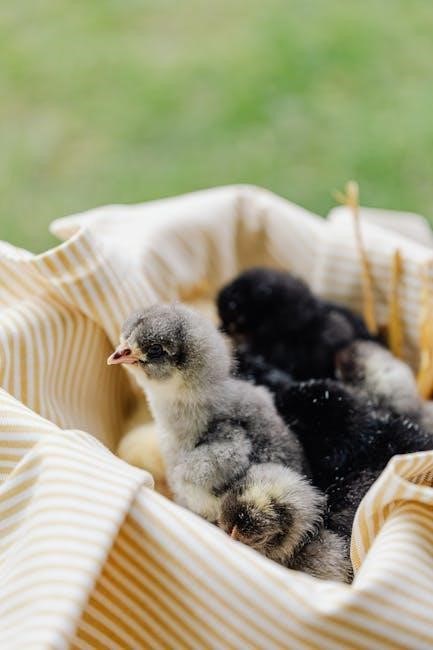
Top Birding Hotspots in Texas
Texas offers exceptional birding opportunities across diverse habitats. Key hotspots include the Rio Grande Valley, known for its tropical species, and the Gulf Coast, a critical stopover during spring and fall migrations. The Texas Panhandle and Central Texas also host unique avifauna, while the Trans-Pecos region boasts desert specialties.
The Rio Grande Valley
The Rio Grande Valley (RGV) is one of the most renowned birding destinations in Texas, offering a unique blend of subtropical and desert habitats. Located along the U.S.-Mexico border, this region is a critical stopover for migratory birds and a year-round home to tropical species rarely seen elsewhere in the United States. The RGV’s diverse landscapes, including riparian woodlands, marshes, and scrublands, support over 500 bird species, making it a paradise for birders. Key locations like Bentsen-Rio Grande Valley State Park and the Santa Ana National Wildlife Refuge are must-visit spots, attracting visitors from across the globe. The area is particularly famous for its spring migration, when millions of birds pass through in April and May. Rare species such as the Great Kiskadee, Green Jay, and Aplomado Falcon can be spotted here. The RGV’s birding festivals and trails further enhance its appeal, making it an indispensable destination for any serious birder exploring Texas.
The Texas Panhandle
The Texas Panhandle, located in the northern part of the state, is a unique birding destination characterized by its vast plains, rolling hills, and diverse habitats. This region is part of the Great Plains and offers a blend of grasslands, wetlands, and woodlands, attracting a wide variety of bird species. The Panhandle is particularly known for its role in bird migration, with many species passing through during spring and fall. In the summer, it is a breeding ground for birds like the Western Meadowlark and Scissor-tailed Flycatcher. During winter, the area hosts species such as the Sandhill Crane and Rough-legged Hawk. Popular birding spots include Palo Duro Canyon State Park and Lake Meredith National Recreation Area, where visitors can spot species like the Ladder-backed Woodpecker and Barn Owl. The Panhandle’s open landscapes and seasonal bird activity make it a must-visit for bird enthusiasts exploring Texas.
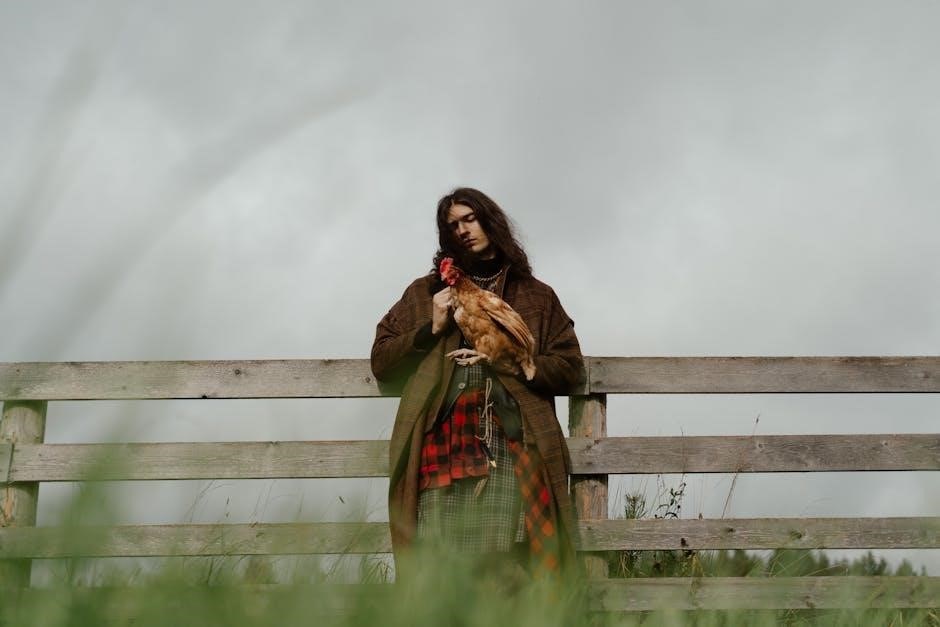
Seasonal Birding in Texas
Texas offers exceptional birding opportunities year-round, with distinct species present during each season. Spring and fall migrations bring vibrant songbirds, while summer showcases breeding residents like Painted Buntings and Yellow-breasted Chats. Winter attracts waterfowl and raptors, making every season unique.
Spring Migration
Spring migration in Texas is a spectacular event, typically occurring from late February to early May. This period marks the return of neotropical migrants, such as warblers, tanagers, and orioles, from their wintering grounds in Central and South America. The state’s strategic location along the Central Flyway makes it a critical stopover for these birds, offering abundant food and shelter. Key species to look for include the Chestnut-sided Warbler, Summer Tanager, and Baltimore Oriole.
- The Rio Grande Valley and Gulf Coast are particularly renowned for their concentrations of migratory birds.
- High Island and Galveston are hotspot destinations, with migratory birds resting and feeding after crossing the Gulf of Mexico.
- Spring migrants often arrive in waves, with early species like the Yellow Warbler and Blue-gray Gnatcatcher appearing as early as February.
Birders should focus on woodlands, gardens, and coastal areas during this time, as these habitats attract a variety of species. The spring migration also offers a chance to observe breeding plumage and active foraging behaviors, making it a prime time for birding in Texas.
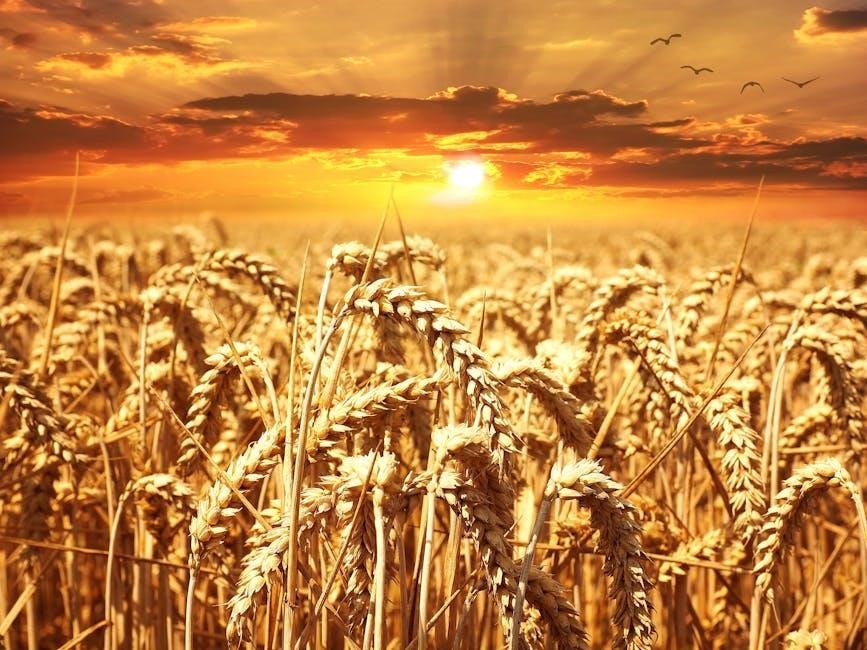
Summer Breeding
Summer breeding in Texas typically begins in late spring and peaks during the hottest months of the year. This period is characterized by the establishment of breeding territories and the nesting activities of numerous bird species. The state’s diverse habitats, ranging from open fields to dense woodlands, provide ideal conditions for birds to raise their young. Species such as the Northern Mockingbird, Eastern Bluebird, and Painted Bunting are commonly seen during this time.
- Many birds, like the Great Crested Flycatcher and Red-winged Blackbird, are active in urban and suburban areas, nesting in trees and shrubs.
- The warm weather and abundant insects make summer an ideal time for birds to feed their chicks, ensuring healthy growth and survival.
- Some species, such as the Scissor-tailed Flycatcher and Barn Swallow, are known for their acrobatic displays during breeding season.
Summer breeding also highlights the importance of conservation efforts, as many bird species rely on specific habitats for nesting. Birders can enjoy observing these behaviors in Texas’s parks, nature reserves, and even backyard bird-friendly gardens during the summer months.
Fall Migration
Fall migration in Texas is a spectacular event, marking the return of many bird species to warmer regions for the winter. This period typically occurs from late July through November, with peak activity in September and October. During this time, Texas serves as a critical stopover for birds traveling along the Central and Mississippi Flyways, offering abundant food and shelter.
- Species such as the Broad-winged Hawk, American Golden-Plover, and Sanderling can be seen in large numbers, particularly in coastal areas like the Gulf Coast.
- Waterfowl, including Blue-winged Teal and Northern Shoveler, begin their journey southward, congregating in wetlands and marshes.
- Songbirds, such as Yellow Warbler and American Redstart, are also active, often seen in urban gardens and woodlands.
During fall migration, birds often travel in flocks, making it an ideal time for birders to spot multiple species in a single outing. The cooler weather and vibrant foliage add to the appeal of birdwatching during this season. Birders are encouraged to visit locations like Bolivar Flats and High Island for exceptional viewing opportunities.
Wintering Birds
Texas is a vital wintering ground for numerous bird species seeking refuge from colder climates. The state’s diverse habitats, from coastal wetlands to desert landscapes, provide ideal conditions for birds to survive the winter months. Many species arrive in Texas as early as October and remain until February or March.
- Waterfowl, such as Mallards, Northern Pintails, and Green-winged Teal, are abundant in wetlands and reservoirs, particularly in the Gulf Coast and Panhandle regions.
- Raptors like Bald Eagles and Harriers are common winter residents, often seen soaring over open fields and lakes.
- Songbirds, including American Robins and Cedar Waxwings, can be found in urban areas, feeding on berries and insects.
- Shorebirds like Dunlin and Sanderlings frequent coastal beaches and mudflats, where they forage for small invertebrates.
Key wintering locations include the Gulf Coast’s Bolivar Peninsula and the Lower Rio Grande Valley, which offer refuge for both migratory and resident birds. Birders can also explore Central Texas’s Balcones Canyonlands for wintering species.
Winter is an excellent time to observe birds that are less active during other seasons, making it a rewarding period for Texas birders.
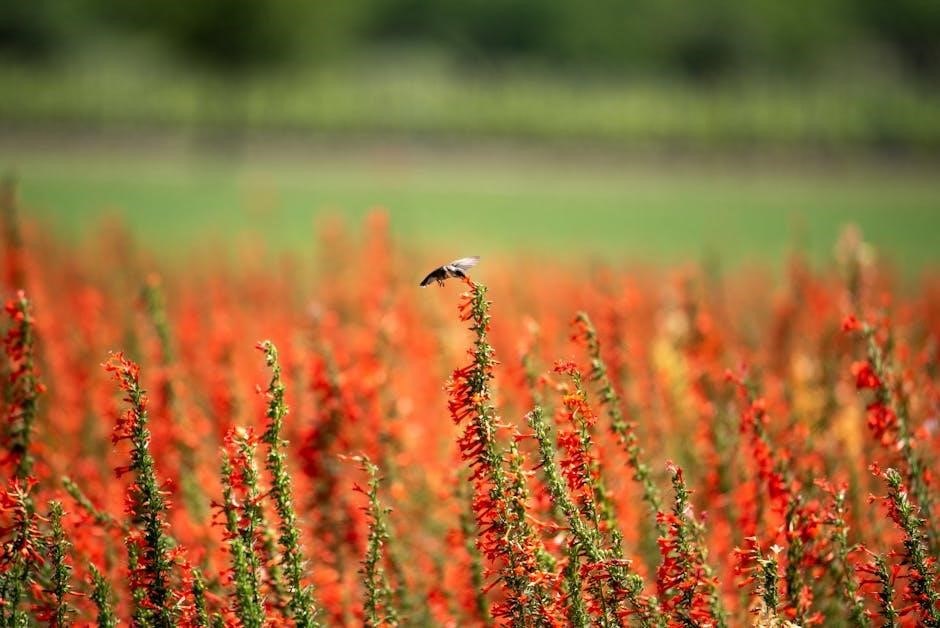
Bird Identification Tips
Bird identification in Texas involves observing plumage, size, and behavior. Note habitat preferences and seasonal variations. Use field guides, binoculars, and expert resources for accurate spotting. Understanding these elements enhances your birding experience across the state’s diverse regions effectively.
Physical Characteristics and Behavioral Clues
Identifying birds in Texas often begins with observing their physical traits, such as plumage color, patterns, and shape. Beak shape and size can also reveal a bird’s diet and habitat preferences. For example, waterfowl like ducks have broad, flat beaks for filtering water, while raptors like hawks have sharp, hooked beaks for tearing flesh.
Behavioral clues are equally important. Note how birds move, such as the rapid wingbeats of hummingbirds or the graceful soaring of eagles. Migration patterns and foraging habits can also help pinpoint species. For instance, warblers often flit between trees in search of insects, while sandpipers probe mudflats for small invertebrates.
Habitat-specific behaviors are key. Birds like herons and egrets wade in wetlands, while sparrows and finches frequent backyards and shrubby areas. Observing these physical and behavioral traits together provides a reliable way to identify Texas’s diverse avifauna effectively.
Vocalizations
Bird vocalizations are one of the most effective tools for identifying species in Texas. Many birds are heard before they are seen, and their unique songs or calls can provide instant identification. For example, the distinctive “phoebe” call of the Eastern Phoebe or the melodic trills of the Northern Mockingbird are unmistakable.
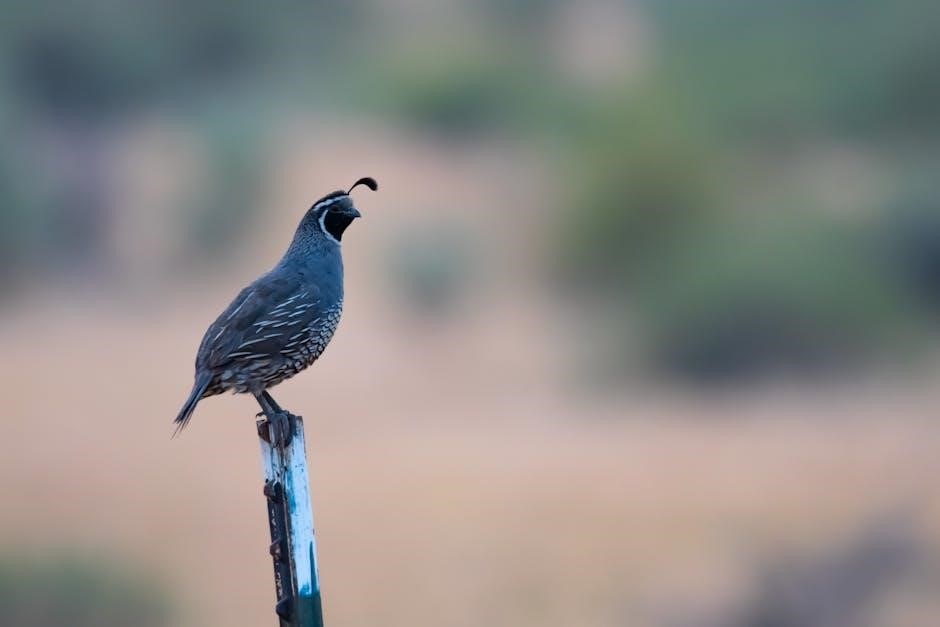
Different species vocalize for various reasons, such as establishing territory, attracting mates, or signaling alarm. Pay attention to the pitch, rhythm, and tone of the sounds. For instance, the loud, whistled “konk-la-ree” of the Red-winged Blackbird is a common sound in wetlands, while the high-pitched “zeep” of the Ruby-throated Hummingbird is often heard near feeders.
Seasonal variations in vocalizations are also important. During breeding seasons, males often sing more frequently to defend territories, while during migration, calls may be more subdued. Using recordings or birding apps can help learners match sounds to species. Additionally, some birds mimic other sounds, like the Northern Mockingbird, which can imitate other birds, insects, or even man-made noises.
Mastering bird vocalizations takes practice, but it enhances the birding experience and allows for identification even in dense habitats where birds are hard to see;

Common Bird Species of Texas
Texas is home to over 600 species of birds, thanks to its diverse landscapes and location along major migration routes. Among the most commonly seen species are the Northern Mockingbird, the state bird, known for its mimicry abilities, and the American Robin, a frequent visitor to backyards and parks.
Waterfowl like the Mallard and Wood Duck are abundant in wetlands, while the Red-winged Blackbird is a staple in marshes and fields. The Mourning Dove, with its mournful call, is a year-round resident, and the Downy Woodpecker is often seen in urban areas.
Texans also enjoy sightings of the Western Meadowlark, known for its melodious song, and the Great-tailed Grackle, recognized by its iridescent feathers and distinctive keel-shaped tail. Raptors like the Red-tailed Hawk and American Kestrel are common in open skies, while the Barn Owl is a nocturnal hunter frequently spotted in rural areas.
Seasonal visitors, such as the Ruby-throated Hummingbird and the Painted Bunting, add vibrancy to the state’s avifauna. These species highlight the diversity and richness of Texas’s bird life, making it a paradise for bird enthusiasts and casual observers alike.
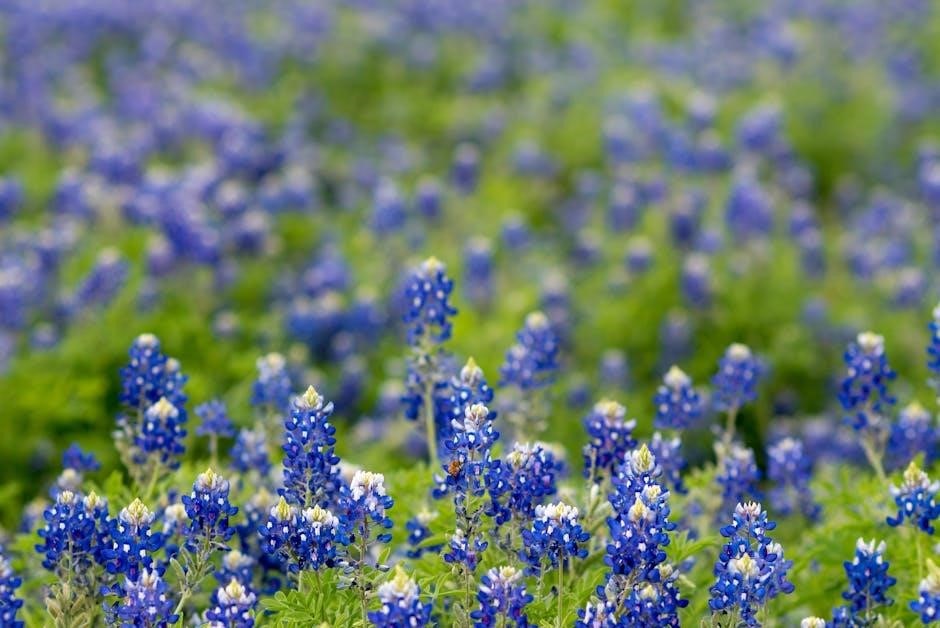
Conservation Efforts
Bird conservation in Texas is a collaborative effort involving government agencies, non-profits, and local communities. The Audubon Society and Texas Parks and Wildlife Department lead initiatives to protect habitats and reduce threats to avian populations. Key programs focus on preserving wetlands, forests, and grasslands critical for migratory and resident species.
Habitat restoration projects, such as the recovery of coastal wetlands and the creation of wildlife corridors, are vital for species like the Whooping Crane and migratory songbirds. Nesting sites for coastal birds, such as the Snowy Plover, are protected through regulated access and education campaigns.
Addressing pollution and climate change is another priority. Initiatives include reducing plastic waste in waterways and promoting bird-friendly practices in urban development. Citizen science projects, like bird counts and nest monitoring, engage the public and provide valuable data for conservation strategies.
These efforts highlight the importance of sustained commitment to safeguarding Texas’s rich bird diversity for future generations. Continued collaboration and public support are essential to ensuring the success of these conservation programs.
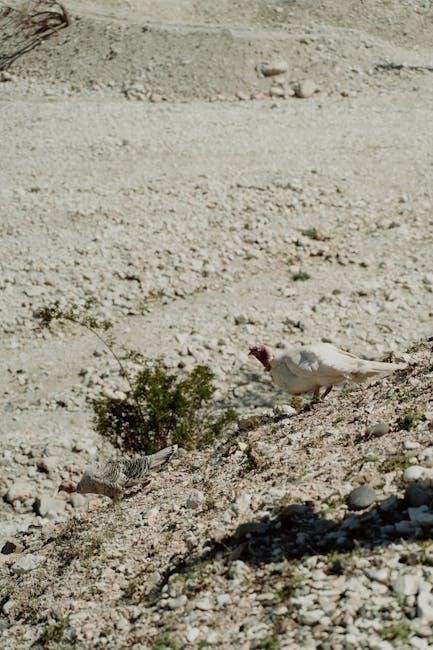
Resources for Texas Birders
Texas birders have access to a wealth of resources to enhance their birding experiences. The Sibley Guide to Birds and the National Audubon Society Field Guide to Birds are indispensable for identifying species. Online platforms like the Cornell Lab of Ornithology’s All About Birds and the Texas Parks and Wildlife Department’s website provide detailed information on habitats, migration patterns, and conservation efforts.
Birding apps such as Merlin Bird ID and eBird are essential tools. Merlin helps identify birds using photos and descriptions, while eBird offers real-time sighting reports and interactive maps. Local birding clubs, such as the Texas Ornithological Society, organize guided tours and workshops, fostering community and knowledge sharing.
For those seeking immersive experiences, Texas hosts several birding festivals, including the Rio Grande Valley Birding Festival and the Galveston FeatherFest. These events feature expert lectures, field trips, and opportunities to spot rare species. Additionally, the Great Texas Birding Trail provides a mapped route covering the state’s best birding locations, complete with viewing tips and site descriptions.
These resources empower birders of all skill levels to explore and appreciate Texas’s avian diversity effectively.
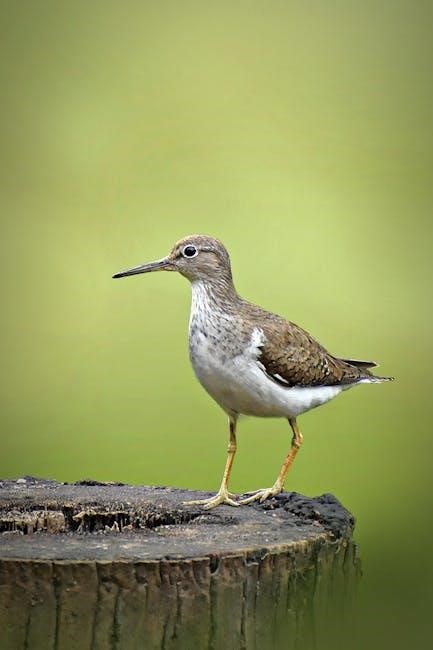



About the author